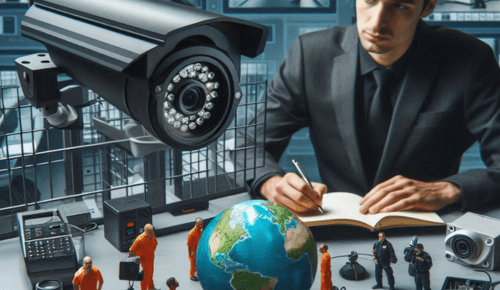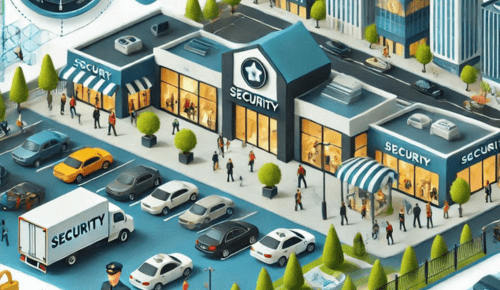
Security cameras in detention facilities must do more than just record footage. They need to provide clear visuals, resist tampering, and ensure that every area remains under constant surveillance. Detention equipment contractors emphasize advanced security features to keep correctional facilities, holding areas, and high-risk environments protected.
Wide Dynamic Range Imaging to Eliminate Blind Spots
Surveillance cameras in detention facilities must adapt to varying light conditions. Wide Dynamic Range (WDR) technology ensures that areas with harsh lighting differences, such as sunlit hallways or dimly lit cells, remain visible without dark or overexposed spots. This feature adjusts brightness levels automatically, capturing balanced images that leave no room for shadows or blinding glare.
Detention equipment contractors recommend WDR imaging to eliminate blind spots where inmates or unauthorized individuals could hide. Traditional cameras struggle with areas that shift between bright daylight and artificial lighting, creating distorted or unclear footage. Security detention equipment contractors prioritize WDR-equipped cameras because they enhance visibility in entry points, corridors, and cell blocks, ensuring staff can monitor every detail with clarity.
Audio-Integrated Surveillance to Monitor Critical Conversations
Security isn’t just about what can be seen—it’s also about what can be heard. Audio-integrated surveillance cameras allow facility operators to capture verbal interactions between inmates, officers, and visitors. These systems help detect conflicts, threats, or discussions that could indicate potential security breaches. Recorded conversations provide valuable evidence when investigating incidents or verifying claims.
Detention equipment contractors recommend audio-enabled cameras in booking areas, interrogation rooms, and high-traffic zones where verbal exchanges play a key role in maintaining order. When paired with video footage, audio surveillance ensures that security personnel gain full context of an event, rather than relying on silent recordings that only tell half the story. Security detention equipment contractors implement these solutions to help prevent misunderstandings and improve overall situational awareness.
Anti-Tamper Mounting Systems Securing Camera Stability
In correctional facilities, security cameras must withstand tampering attempts. Standard mounting systems aren’t enough to prevent inmates or unauthorized individuals from disabling, shifting, or blocking a camera’s view. Anti-tamper mounting solutions secure surveillance equipment in place, ensuring continuous operation without disruption.
Security detention equipment contractors design and install tamper-resistant enclosures and reinforced brackets to keep cameras intact. These features prevent physical damage and ensure that cameras remain fixed on high-risk zones, such as entrances, hallways, and recreation areas. With impact-resistant materials and hidden wiring, these installations reduce the chances of sabotage, keeping the facility under constant observation.
Panoramic View Technology for Comprehensive Facility Coverage
Detention facilities require full coverage to prevent security gaps. Panoramic view cameras offer a wide-angle perspective, eliminating the need for multiple fixed cameras in large areas. With 180-degree and 360-degree field-of-view options, these cameras capture every corner of a room or open space, reducing blind spots and minimizing the need for additional surveillance equipment.
Detention equipment contractors recommend panoramic view technology for control rooms, outdoor yards, and common areas where multiple vantage points are necessary. Security detention equipment contractors install these cameras to maximize coverage with fewer devices, lowering maintenance costs while increasing efficiency. By providing a seamless, distortion-free image, panoramic cameras give officers and facility staff a complete view of their surroundings without missing crucial activity.
Remote Monitoring Features Allowing Instant Security Response
Real-time surveillance is a necessity in detention facilities, where immediate action can prevent dangerous incidents. Remote monitoring technology enables security personnel to view live camera feeds from any authorized device, allowing for instant response to emergencies. Whether accessed from a control room or a secure mobile device, remote monitoring ensures that officers remain aware of facility activity at all times.
Security detention equipment contractors integrate remote-access surveillance into modern security systems, ensuring that supervisors can oversee operations even when off-site. This feature provides flexibility in managing multiple locations, improving response time when disturbances occur. With secure access protocols and encrypted video feeds, remote monitoring solutions protect sensitive footage while granting authorized personnel real-time insight into facility security.
Analytics-Enhanced Cameras Detecting Suspicious Behavior Early
Advanced security cameras do more than just record—they analyze. Modern surveillance systems use AI-driven analytics to detect unusual movements, loitering, or aggressive behavior before an incident escalates. These smart cameras can alert security personnel when abnormal activity is detected, reducing response times and increasing overall facility safety.
Detention equipment contractors recommend analytics-enhanced cameras for high-risk areas where proactive monitoring is essential. Security detention equipment contractors install these intelligent systems in hallways, perimeter fencing, and holding cells, helping officers identify threats before they become serious security concerns. With real-time alerts and behavioral analysis, these cameras serve as an extra layer of protection, allowing detention facilities to operate with greater efficiency and safety.

